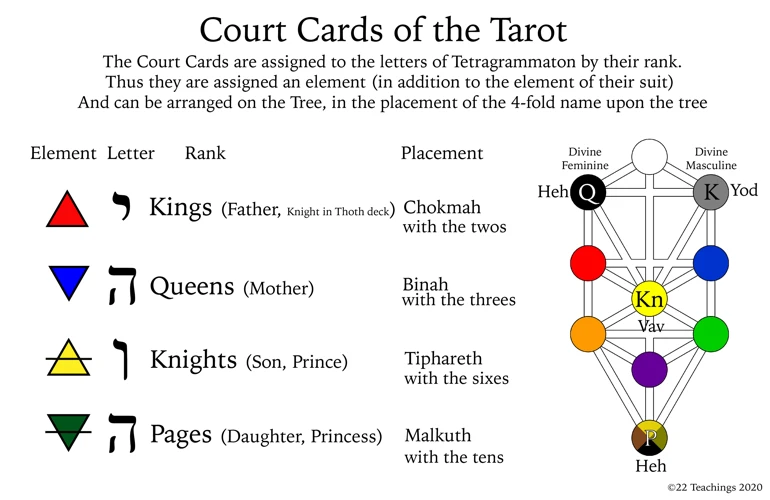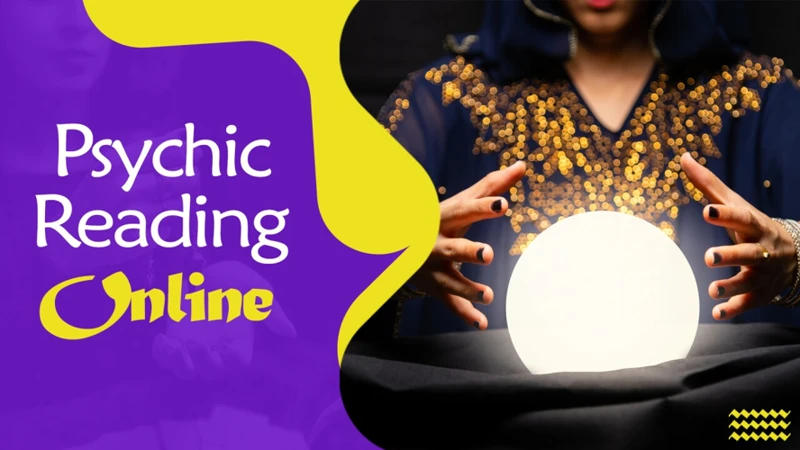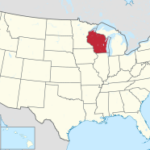The Enigmatic World of Court Cards in Tarot: Discovering the Kings, Queens, Knights, and Pages
Tarot, with its enigmatic symbols and mystical energies, has long captured the curiosity of those seeking guidance or self-discovery. Among the intriguing elements of the Tarot are the Court Cards, a captivating subset of the deck that adds depth and complexity to readings. In this in-depth exploration, we will unveil the mysteries surrounding the Kings, Queens, Knights, and Pages, shedding light on their meanings, interpretations, symbolism, and how to read them in a spread. Whether you are a curious beginner or a seasoned tarot enthusiast, join us on this mystical journey as we unravel the secrets of the Court Cards and unlock their wisdom.
Contents
- Overview of Court Cards
- Meanings and Interpretations
- Symbolism and Imagery
- Reading Court Cards in a Spread
- Conclusion
-
Frequently Asked Questions
- 1. What is the significance of Court Cards in Tarot?
- 2. How are Court Cards different from the rest of the Tarot deck?
- 3. Can Court Cards represent specific people in a reading?
- 4. What is the significance of the Kings in the Court Cards?
- 5. How do the Queens contribute to Tarot readings?
- 6. What role do the Knights play in Court Cards?
- 7. What do the Pages represent in Court Cards?
- 8. How can Court Cards be interpreted in a Tarot spread?
- 9. Are Court Cards always positive in a Tarot reading?
- 10. Can Court Cards represent aspects of the reader in a Tarot reading?
- References
Overview of Court Cards

The Court Cards in Tarot represent the personalities and archetypes that exist within us and the people we encounter in our lives. These cards are often associated with individuals or specific attributes, embodying the energy and symbolism of their respective suits. The Court Cards consist of four ranks: the Kings, Queens, Knights, and Pages. Each rank signifies a different level of maturity and experience. The Kings exemplify authority, leadership, and mastery within their suit. They symbolize power, responsibility, and the ability to take action in the direction of their suit’s element. The Queens embody nurturing, intuition, and emotional depth. They represent the feminine qualities of their respective suit, providing wisdom, support, and a sense of harmony. The Knights are characterized by their energy, passion, and sense of adventure. They are often seen as the messengers, bringing forth change and action within their suit. Lastly, the Pages represent youthful energy, curiosity, and the potential for growth. They embody the beginning stages of their suit and often symbolize new opportunities, messages, or learning experiences. Understanding the roles and meanings of the Court Cards is essential in unlocking the depth and complexity of Tarot readings. They offer valuable insights into the dynamics, personalities, and influences present in a spread, guiding us on our journey towards self-discovery and clarity. To further explore the significance of Court Cards, let’s dive into the meanings and interpretations of each rank, starting with the Kings.
Meanings and Interpretations

The Court Cards in Tarot hold a myriad of meanings and interpretations that add depth and complexity to readings. Each rank – the Kings, Queens, Knights, and Pages – carries its own unique symbolism and attributes. The Kings represent authority, leadership, and mastery within their respective suits, embodying the elemental energy of their suit with a sense of power and responsibility. The Queens, on the other hand, embody nurturing, intuition, and emotional depth, providing wisdom and support to those around them. The Knights are filled with energy, passion, and adventure, acting as messengers of change and action within their suit. Lastly, the Pages symbolize youthful energy, curiosity, and the potential for growth, often indicating new opportunities or learning experiences. By understanding the individual meanings and interpretations of each rank, Tarot readers can unlock a deeper understanding of the personalities, dynamics, and influences at play in a spread. To delve further into the meanings of Court Cards, let’s explore the specific attributes of the Kings, Queens, Knights, and Pages.
1. The Kings
The Kings in the Court Cards are the epitome of authority, leadership, and mastery within their respective suits. Each King represents a specific element: the King of Wands embodies the fiery energy of passion and ambition, the King of Cups represents emotional depth and intuition, the King of Swords symbolizes intellect, logic, and communication, and the King of Pentacles signifies material abundance and practicality. These regal figures exude a sense of power and responsibility, commanding attention and respect. The King of Wands, associated with the suit of Wands, is a visionary leader who embodies passion and creativity. He inspires others with his ambitious nature and unwavering determination. The King of Cups, linked to the suit of Cups, is a compassionate and empathetic ruler, providing emotional support and guidance. His intuitive nature allows him to understand the depths of human emotions and navigate through complex situations with wisdom. The King of Swords, belonging to the suit of Swords, is a master of intellect and communication. He values clarity, rationality, and logic above all else, making him an excellent strategist and problem solver. The King of Pentacles, associated with the suit of Pentacles, is a symbol of prosperity, stability, and practicality. He represents abundance in all aspects of life and uses his wealth and resources to create a secure and nurturing environment. When the Kings appear in a reading, they often represent influential figures or embody qualities that we need to embrace or develop within ourselves. Their presence signifies a call to step into positions of leadership, take charge of our lives, and harness the energy of their respective suits. To further explore the profound meaning and interpretation of the Court Cards, let’s delve into the intriguing realm of the Queens.
2. The Queens
The Queens in Tarot represent the feminine energy within the Court Cards. They embody nurturing, intuition, and emotional depth. Each Queen is associated with a specific suit, aligning with the characteristics and qualities of that suit’s element. The Queen of Wands, representing the suit of Wands, is a vibrant and passionate leader. She exudes confidence, creativity, and enthusiasm. Her presence ignites inspiration and motivates others to pursue their ambitions. The Queen of Cups, associated with the suit of Cups, is emotionally intuitive and empathetic. She embodies deep emotional intelligence, compassion, and sensitivity. Her nurturing nature provides a safe space for emotional expression and healing. The Queen of Swords, representing the suit of Swords, embodies intellect, clarity, and assertiveness. She possesses keen observation skills, discernment, and the ability to communicate with honesty and directness. The Queen of Pentacles, associated with the suit of Pentacles, represents abundance, stability, and practicality. She is grounded, nurturing, and thrives in creating a secure environment for herself and others. The Queens in Tarot serve as guides, offering wisdom and support while representing various aspects of femininity. Their presence in a reading signifies the influence of nurturing energies, emotional intelligence, and the power of intuition. To explore the symbolism and imagery within the Court Cards, continue reading to the next section. If you want to dive into the Suit of Wands and its representation of ambition and passion in Tarot, you can read more here.
3. The Knights
In the realm of Tarot, the Knights are the epitome of action, adventure, and the pursuit of their suit’s essence. Representing the element of Fire, the Knight of Wands is driven by passion, ambition, and an unwavering desire for growth. This card signifies a period of excitement, movement, and the need for exploration. It encourages you to embrace your inner fire, allowing it to guide you on a journey of self-discovery and transformation. The Knight of Cups, associated with the element of Water, speaks to matters of emotions, intuition, and creativity. This knight reflects sensitivity, romance, and a tendency to follow the heart’s desires. With their charming nature, they often bring messages of love, inspiration, or artistic pursuits. The Knight of Swords embodies the element of Air, representing intellect, communication, and swift action. This knight is known for their decisive nature, fueled by logic and reason. Their appearance in a reading may indicate the need for clear, assertive communication or facing challenges head-on with determination. Lastly, the Knight of Pentacles symbolizes the element of Earth, offering stability, practicality, and a steadfast approach to achieving goals. This knight represents hard work, responsibility, and the pursuit of material abundance. They remind us to remain grounded and committed as we navigate the path towards wealth and success. The Knights in Tarot serve as catalysts for change and progression. They urge us to be courageous, adventurous, and open to new opportunities. Whether it’s the transformative journey of the Fool’s Journey or the pursuit of abundance in the Suit of Pentacles, the Knights are here to inspire and motivate us to take action and embrace the adventures that lie ahead.
4. The Pages
The Pages in Tarot are the youthful messengers of their respective suits, bringing with them fresh energy, curiosity, and new opportunities. Representing the beginning stages of their suit, the Pages symbolize the potential for growth and development. Just like a page in a book, they hold the promise of unfolding stories and lessons yet to be learned. Each Page is associated with a specific suit, adding a unique flavor to their interpretations.
The Page of Wands: The Page of Wands is a symbol of ambition and passion. They are filled with enthusiasm, creativity, and a sense of adventure. This Page encourages you to embrace your desires, explore new ventures, and take risks in pursuit of your passions. They serve as a reminder to ignite the fire within and use your boundless energy to express yourself.
The Page of Cups: The Page of Cups is a bearer of emotional depth, artistic inspiration, and intuition. They represent the realm of feelings, love, and creativity. This Page encourages you to be open to your emotions, trust your intuition, and explore your artistic or imaginative pursuits. They bring messages of love, new relationships, or a need for emotional healing.
The Page of Swords: The Page of Swords embodies the qualities of intellect, communication, and mental agility. They symbolize curiosity, the pursuit of knowledge, and the power of words. This Page encourages you to seek truth, express yourself assertively, and embrace challenges that require mental acuity. They bring messages of clarity, a need for clear communication, or the exploration of new ideas.
The Page of Pentacles: The Page of Pentacles represents potential, opportunity, and the realm of the material world. They embody the energy of wealth, abundance, and groundedness. This Page encourages you to be practical, patient, and dedicated in your pursuit of success. They bring messages of new financial opportunities, the importance of building a solid foundation, or the manifestation of your goals.
When interpreting the Pages in a Tarot reading, it is important to pay attention to their surrounding cards and the specific question or context of the reading. The Pages serve as messengers, delivering insights, new beginnings, and invitations to explore different aspects of your life. Embrace the youthful energy and open-mindedness of the Pages, allowing them to guide you on your personal Fool’s Journey towards self-discovery and transformation.
Symbolism and Imagery

The symbolism and imagery depicted in the Court Cards of Tarot play a crucial role in understanding their meanings and interpretations. Each Court Card carries distinct visual representations that align with their respective rank and suit. The Kings are often depicted as authority figures, seated on thrones, symbolizing power and control. They are adorned with regal attire, crowns, and scepters, signifying their leadership roles. The Queens, on the other hand, exude grace and femininity. They are often portrayed with flowing robes, holding symbols of their suit, such as a cup for emotions or a sword for intellect. The Knights are characterized by their dynamic energy and action-oriented nature. They are often shown on horseback, charging forward with weapons in hand, representing their ambition and passion. The Pages, as the youngest members of the Court, display a sense of curiosity and potential. They are often depicted in playful or learning positions, holding the tools or symbols of their suit. For example, a Page of Pentacles may be shown with a budding plant, symbolizing growth and prosperity. The symbolism and imagery of the Court Cards provide visual cues that help readers connect with the energies and qualities they represent. By incorporating these visual elements into interpretations, readers can gain deeper insights into the personalities, characteristics, and influences associated with each Court Card. To further explore the symbolism and imagery of Tarot, you may also refer to the Suit of Pentacles, which delves into the themes of wealth and abundance represented by one of the four suits in the Tarot deck.
Reading Court Cards in a Spread
Reading Court Cards in a spread can be both fascinating and challenging. These cards bring their unique energy and symbolism to a Tarot reading, providing valuable insights into the dynamics and personalities involved. When interpreting Court Cards, it’s important to consider their placement in the spread, the question being asked, and their relationships with the surrounding cards. One approach is to view Court Cards as representative individuals, reflecting different aspects of ourselves or the people involved in the situation. For example, a King might indicate someone with authority and leadership qualities, while a Queen could represent nurturing and intuitive energy. Pay attention to the suits as well, as they provide additional clues about the areas of life that are being influenced. Another method is to look at the Court Cards as energy or qualities that need to be acknowledged or expressed within the situation. These cards can serve as guides, reminding us to embrace or embody specific attributes to navigate the circumstances effectively. Pay attention to the interactions between the Court Cards and other cards in the spread. Do they face each other, suggesting collaboration or conflict? Are they in close proximity, indicating a strong connection or influence? These interactions offer valuable insights into the relationships and dynamics at play. Additionally, the numerology of the cards can provide further context. For instance, a Page paired with a King may indicate a lesson being taught or wisdom being passed down. As with any Tarot reading, trust your intuition and the messages that resonate with you. Combining your intuitive interpretation with the traditional meanings of Court Cards will enable a holistic understanding of the reading. By embracing the complexity of Court Cards and delving into their meanings, you can unlock a deeper level of understanding and wisdom in your Tarot practice.
Conclusion
In conclusion, the Court Cards in Tarot bring a unique and multifaceted dimension to readings, providing insight into the personalities, energies, and dynamics at play. The Kings, Queens, Knights, and Pages offer distinct qualities and characteristics that enhance the overall interpretation of a spread. The Kings symbolize authority, leadership, and action, while the Queens embody nurturing, intuition, and balance. The Knights bring forth energy, passion, and transformation, while the Pages represent new beginnings and learning experiences. By understanding the meanings and interpretations of these Court Cards, readers can gain a deeper understanding of the individuals and influences present in a reading.
It is important to remember that while the Court Cards can provide valuable insights, they are not limited to representing actual people in one’s life. Instead, they symbolize different aspects of our own personalities or the energies and archetypes that we encounter. By recognizing these qualities within ourselves and others, we can navigate through challenges, make informed decisions, and embrace personal growth.
As you embark on your Tarot journey, take the time to study and explore the depths of the Court Cards. Connect with their symbolism, imagery, and unique characteristics to enhance your readings. Embrace the wisdom and guidance they offer and allow them to expand your understanding of the Tarot’s intricate tapestry. Remember, Tarot is a tool for self-reflection, empowerment, and spiritual growth, and the Court Cards are an essential part of this transformative process.
So, the next time you lay out a Tarot spread, take a close look at the Court Cards and unravel their secrets. Let their energy and symbolism guide you on a profound journey of self-discovery and insight. Embrace the complexities of the Court Cards and the wisdom they hold within. Open yourself up to the possibilities and allow the Tarot to illuminate your path.
Frequently Asked Questions
1. What is the significance of Court Cards in Tarot?
Court Cards in Tarot represent different personalities and archetypes, adding depth and complexity to readings. They offer insights into the dynamics, influences, and characteristics present in a spread.
2. How are Court Cards different from the rest of the Tarot deck?
Court Cards differ from the rest of the Tarot deck in that they represent people or specific attributes. While the numbered cards represent situations or energies, Court Cards embody individuals and their qualities.
3. Can Court Cards represent specific people in a reading?
Yes, Court Cards can represent specific people in a reading, either the person being read for or someone in their life. The characteristics and attributes of the Court Card can offer insights into the individual’s personality or role.
4. What is the significance of the Kings in the Court Cards?
Kings symbolize authority, leadership, and mastery within their suit. They represent power, responsibility, and action. The King’s presence in a reading may suggest the need for taking control or displaying leadership qualities.
5. How do the Queens contribute to Tarot readings?
Queens embody nurturing, intuition, and emotional depth. They bring forth wisdom, support, and harmony to a reading. The Queen’s presence may indicate the need for nurturing oneself or others, trusting one’s intuition, or seeking emotional balance.
6. What role do the Knights play in Court Cards?
The Knights are associated with energy, passion, and adventure. They bring forth movement, change, and action within their suit. The appearance of a Knight in a reading may suggest a need for taking risks or pursuing new opportunities.
7. What do the Pages represent in Court Cards?
Pages symbolize youthful energy, curiosity, and the potential for growth. They embody the beginning stages of their suit and symbolize new opportunities, messages, or learning experiences. The Pages encourage exploration and embracing curiosity.
8. How can Court Cards be interpreted in a Tarot spread?
Court Cards can be interpreted by considering their rank, suit, and the context of the reading. Their position in the spread and surrounding cards provide clues to their significance. Additionally, considering their elemental correspondences can further enhance interpretation.
9. Are Court Cards always positive in a Tarot reading?
Court Cards can have positive, negative, or neutral interpretations, depending on the context and surrounding cards. Their meaning is influenced by the question, the reader’s intuition, and the overall energy of the reading.
10. Can Court Cards represent aspects of the reader in a Tarot reading?
Yes, Court Cards can represent aspects of the reader’s personality or characteristics they are embodying at the time of the reading. The appearance of a Court Card may offer insights and guidance in navigating their current situation or mindset.







